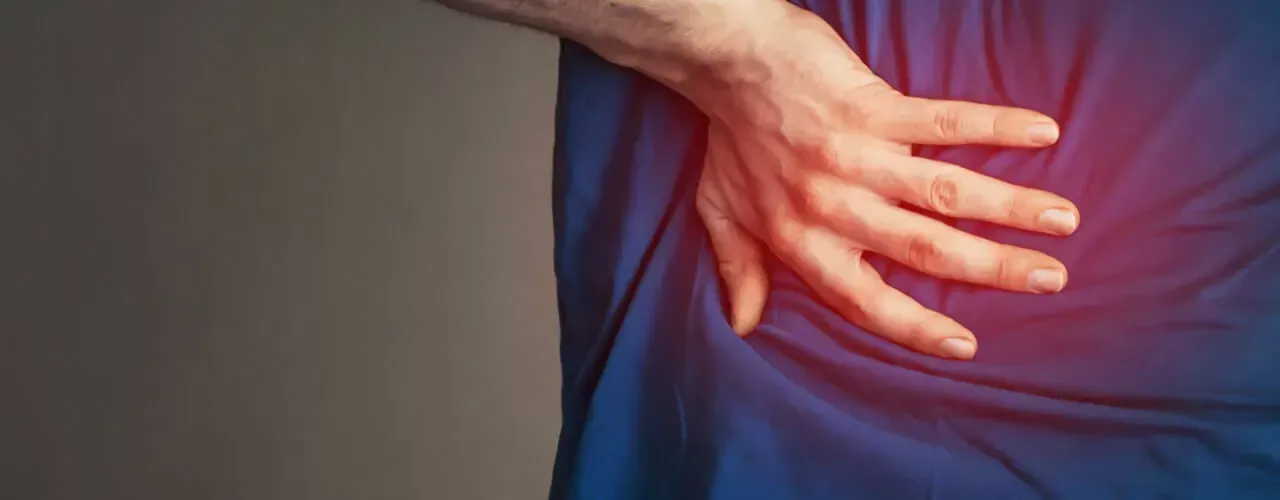KICK CHRONIC HIP AND KNEE PAIN TO THE CURB
Joint pain is one of the most common forms of pain to develop with age. Whether as a result of wear and tear over time, or as a result of an injury that never healed correctly, joint pain can significantly interfere with your quality of life and ability to move around freely. Two of the most common places to develop joint pain is in the hips and knees.
If you’re dealing with nagging pain in your hips and knees, it’s time to take a stand and move forward from this problem, once and for all. Call our physical therapy clinic today to set up an appointment, and take your life back into your own hands!
TIRED OF COPING WITH CHRONIC HIP AND KNEE PAIN?
When you think about it, a majority of your daily comfort depends on your ability to move freely at your hips and knees. When joint pain strikes these areas, it can make it difficult to perform basic tasks like walking or transitioning between standing and sitting positions.
Joint pain in the hips and knees is frequently caused by problems with the muscles and tendons, and physical therapy can help to reduce inflammation in these areas, reducing pain and improving your quality of life by making it easier to move around.
Here are a few common strategies used in physical therapy that can help alleviate joint and hip pain:
- Hot and cold therapy: This is a popular type of therapy that can be performed at home or under the supervision of a physical therapist. Ice is applied to the affected area to reduce swelling, and then heat is applied to increase mobility and relieve pain. Using these types of therapies in an alternating rotation can help you improve your mobility and decrease your pain.
- Manual therapy: Manual therapy is a technique used by physical therapists to target specific areas of pain. These are hands-on techniques that can help you relieve pain in the areas where you’re having the most trouble. These strategies frequently include a combination of stretching exercises as well as massage therapy techniques. Your physical therapist may even recommend stretching techniques that you can do at home in some cases, but you should always consult with your physical therapist before trying anything new.
- While some stretches can help alleviate pain, some stretches may put more pressure on your joints and therefore could actually worsen the pain. Always talk to your physical therapist before trying any new form of manual therapy.
- Ultrasound therapy: In addition to these common types of therapeutic practices, physical therapists will frequently use enhanced imaging techniques to help identify the cause of a particular type of pain. These imaging techniques may include using tools like ultrasound therapy or laser therapy.
Your physical therapist will use an ultrasound device to identify problem areas while also providing deep heating within the tissues that are causing the pain during ultrasound therapy. The physical therapist will use lasers to increase circulation in the targeted area, target swelling, and improve cell growth and reproduction when laser therapy is used. These advanced techniques necessitate specialized equipment and can only be performed by a certified professional in an office setting.
CAN I HANDLE KNEE AND HIP PAIN AT HOME?
Your physical therapist will assist you in determining what is causing your hips and knees to hurt and will provide you with targeted therapies to address the problem while you are in physical therapy.
While going to physical therapy on a regular basis can help you recover from an injury and manage chronic pain, doing these activities with your physical therapist just once or twice a week won’t make a significant difference in your pain.
Your physical therapist will show you exercises you can do at home to help with hip and knee pain. Physical therapy techniques can be incorporated into a larger home-workout program that becomes a regular part of your daily routine in many situations.
As you work to overcome knee and hip pain, your physical therapist may suggest that you try some of the following exercises:
- Swimming
- Aqua Aerobics
- Biking
- Elliptical training
- Yoga
OTHER HELPFUL FORMS OF EXERCISE TO CONSIDER FOR CHRONIC HIP AND KNEE PAIN
Exercises that remove pressure from the joints while targeting the surrounding muscles to help improve strength are often ideal for reducing knee and hip pain.
Aqua exercises are ideal for this because they relieve a lot of the pressure from the joints while still allowing you to stretch and move freely, allowing you to improve your range of motion. Similarly, opting for exercises like biking or running on an elliptical machine instead of a treadmill can help you to get a great cardio workout without having to put pressure on your joints as you would if you were running or walking.
While yoga is a great exercise for improving range of motion and decreasing inflammation, stay mindful about what types of yoga poses you are doing! There are some poses that could put more pressure on your hips and knees, and so should be avoided when you are already experiencing pain in those areas.
The best practice is to consult with your physical therapist before beginning any new exercises and to follow your physical therapist’s recommendations for what types of activities you should do at home on a regular basis.
CALL OUR CLINIC TODAY FOR AN APPOINTMENT
When it comes to overcoming knee and hip pain, physical therapy can be extremely beneficial. Physical therapy can help you find relief from chronic pain that has developed slowly over time, whether you’ve developed pain as a result of an injury or are looking to finally find relief from chronic pain that has developed slowly over time.
To learn more about how physical therapy can help you and to get started, contact your physical therapist.
REQUEST APPOINTMENT
ARE YOU READY TO LIVE PAIN-FREE?
LATEST BLOGS


